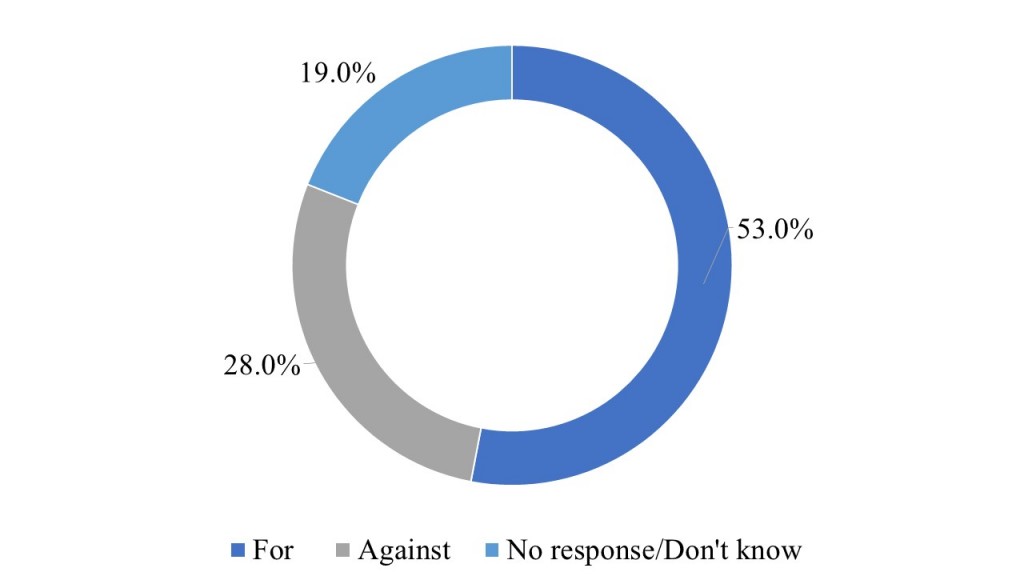Dokdo
On Aug 25~26, the South Korean military conducted its biannual Dokdo defense drill.[1] This year’s exercise was by far the largest in scale. The exercise included army special forces and King Sejong the Great-class destroyer. The South Korean government explained that it had postponed the drill until after the announcement of GSOMIA termination. Director-General Kenji Kanasugi stated that “Takeshima is part of Japanese territory in light of historical facts and international law.”
Budget for 2020
On Aug 29, the South Korean government proposed a record-high budget amounting to KRW 513.5 trillion for the next fiscal year. The amount is 9.3% greater than the initial budget.[2] The most significant increases were for industry, SMEs, and energy (+27.5 percent or KRW 23.9 trillion) followed environment (+19.3% or KRW 8.8 trillion). Budget for R&D, Social Overhead Capital (SOC), and healthcare were also up by 17.3%, 12.9%, and 12.8%, respectively. Next year’s revenue is expected to be reduced by KRW 292 trillion fueling concerns of an economic downturn.
Electoral Reforms
On Aug 29, the National Assembly Special Committee for Political Reform voted on the latest election reform plan, which includes plans to increase the number of proportional representatives in the National Assembly and lower the voting age to 18.[3] Progressive parties claim that the bill must be put to the vote in the November plenary in time for next year’s general election. The Legislation and Judiciary Committee will review the bill for up to 90 days, before it is sent to the floor. It is still unclear, however, whether the bill will pass the floor vote.
US Bases
The Blue House moved to expedite the return of 26 US military bases.[4] Many pointed to the timing of the announcement amid mounting tensions surrounding South Korea’s recent termination of GSOMIA. Experts argue that this is an expression of dissatisfaction over US response to GSOMIA termination. Others claimed that this is leverage against upcoming SMA negotiations.
President Moon in Southeast Asia
On Sept 1~6, President Moon visited Thailand, Myanmar, and Laos.[5] During a summit meeting with Thailand’s Prime Minister Prayut Chan-o-cha, President Moon discussed expanding bilateral cooperation and urged support for a successful Korea-ASEAN Special Summit and the South Korea-Mekong Summit Meeting to be held in November. In Myanmar, President Moon met with Aung San Suu Kyi and President Win Myint to discuss sustainable growth and bilateral economic relations. Finally, President Moon agreed with the Laotian President Bounnhang Vorachit to increase cooperation in agriculture, ICT, and startups.
Debt
According to the Korea Economic Research Institute (KERI), the South Korean government’s average annual debt rose by 14.4 percent during 2000~18. This is the third-highest among developing countries after Argentina (29.2%) and China (17.9%). The country’s household debt-to-GDP ratio last year stood at 97.7 percent, the seventh-highest among 43 countries.[6]
Consumer Price Index
According to a report released by Statistics Korea (KOSTAT) on Sept 3, South Korea’s Consumer Price Index (CPI) dropped by 0.04 percent from a year earlier. This is the first time that the country’s inflation fell into negative territory since the agency began compiling such data in 1965, raising fears of deflation.[7]
Asiana Airlines
On Sept 3, Aekyung, Mirae Asset Daewoo-Hyundai Development Company (MAD-HDC), and Korea Corporate Governance Improvement (KCGI) have reportedly submitted preliminary bids for the 31-percent stake in Asiana Airlines. Aekyung could generate synergy in acquiring the country’s second-largest carrier as it currently owns Jeju Air, the country’s top budget carrier. Mirae Asset Daewoo
formed a consortium with HDC, which maintains the various hotel and duty-free businesses. Local activist fund KCGI, the second-largest shareholder of the country’s largest carrier Korean Air Lines (KAL), also submitted a bid with an unnamed partner.[8]
Demographics
South Korea is expected to have the most aged population in the world by 2045. According to a report released by KOSTAT on Sept 2, the percentage of the country’s population aged 65-or-over will increase from 14.9 percent this year to 37.0 percent in 2045. In 2067, the percentage of population 65-or-older is expected to eclipse those individuals aged between 15 and 64. This trend is due to the country’s record-low birth rate.[9] According to KOSTAT, the country’s total fertility rate stood at 0.98 last year (below one baby per woman), the lowest in the world.[10]
Public Opinion on GSOMIA Termination[11]
[1] “軍, 독도서 ‘영토수호훈련’… 이지스함-특전사 첫 투입,”동아일보, 2019년 8월 26일.
[2] “세수 3조 줄어드는데 예산 44조 증가, 나라 곳간 비상”, 중앙일보, 2019년 8월 30일.
[3] “여야 4당 선거법 강행처리…한국당 “네 번째 날치기”,” 중앙일보, 2019년 8월 30일.
[4] “국가안전보장회의 “주한 미군 기지 조기 반환 추진”,”한겨레, 2019년 8월 30일.
[5] Blue House official website available at: [https://www1.president.go.kr/articles/6981]
[6] “‘정부 부채, 세계에서 3번째로 빨리 증가’,” YTN, 2019년 9월 2일.
[7] “초유의 마이너스 물가…`D의 공포` 엄습,” 매일경제, 2019년 9월 3일.
[8] “막오른 아시아나 인수전…애경·미래에셋·KCGI ‘3파전’ 관측,” 매일경제, 2019년 9월 3일.
[9] “한국, 25년 뒤 ‘가장 늙은 나라’…절반이 일해 나머지 절반 부양한다,” 한국경제, 2019년 9월 2일.
[10] “한국 ‘출산율 0.98명’ 사상 최저…세계 유일 ‘출산율 0명대’ 나라,” 중앙일보, 2019년 8월 28일.
[11] Gallup Korea, Date: August 27-29; sample size: 1,004; margin of error: +3.1 at the 95% confidence level.
Contributing Staff (in alphabetical order): Hong Sang-hwa and Kim Seonkyung
Editor: J. James Kim

 Facebook
Facebook Twitter
Twitter